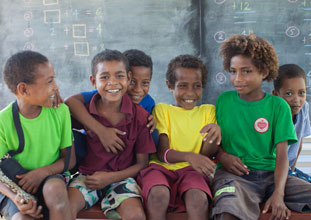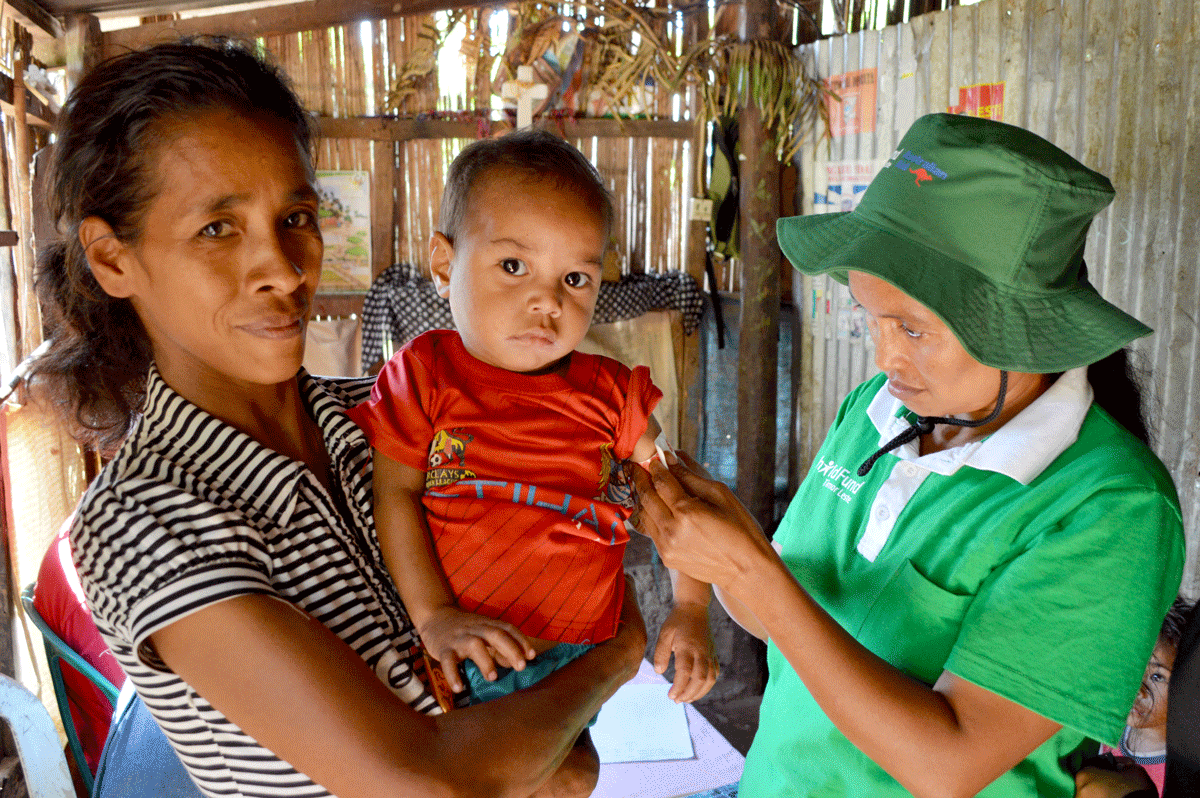Duong grew up in a small rural village in the mountains of northern Vietnam. His parents planted rice and raised livestock to generate an income to support him and his two sisters.
“I was born in a poor village of Cao Phong district, Hoa Binh province. I lived in the mountainous region and travelled on dirt roads. The people there mainly do agricultural activities. Local infrastructure was weak back then,” says Duong. “My family was very poor. When we were little, my parents had to work hard to feed me and my siblings and send us to school.”
In 1998 Duong became a ChildFund Vietnam sponsor child. At eight, his life started to change when he began writing to his Australian sponsor Gordon, who decided to support a child in Vietnam. For Duong it was wonderful to have a friend who was so far away committed to helping a child in need.
“I felt very happy and excited to have a sponsor of my own,” he says. “I received many gifts from him including school supplies, toys and sports equipment. Those meaningful gifts not only gave me encouragement but also helped reduce the burden on my parents.
“[But] I believe the most valuable gift given to me was that my study was maintained and continued thanks to the regular encouragement from my sponsor,” he adds.
Education is a key part of helping children in need. Even as a small child Duong knew that he needed to work hard at school so he could have a bright future.
“I have been really focused on my studies since I was small. As a child, I wanted to set up a good business when I grew up so I could earn money to support my family and to contribute to local community development.”
ChildFund Vietnam began working in Hoa Binh, the province where Duong lives, in 1995 when he was just five years old. Over the past 20 years, Duong has watched his community transform.
“Child sponsorship has brought significant benefits to my community. We have improved infrastructure; concrete roads, irrigation canals and new schools. Now 100 percent of children in the project area are able to attend school,” says Duong. “People’s lives have been significantly improved thanks to the support in agricultural production.”
It may be 2017, but over 663 million people in the world still live without nearby access to a safe water supply. For villages in Nonghet District, northern Laos, accessing clean water is an ongoing challenge.
During the wet months, families rely on local natural springs for water. However, these often run dry when there are periods of little rainfall, forcing people to walk further in search of water. This is a particular burden for children, who are often responsible for water collection, with many undertaking a two-hour return trip to fetch water each morning before school.
This is not only an exhausting task, but it is also extremely dangerous. Some springs are located in areas which are yet to be cleared of unexploded bombs. During the nine years of the Vietnam War, more than 270 million cluster munitions were dropped over Laos, earning it the unenviable title of the most bombed country per capita in the world. Almost a third of these bombs failed to detonate and remain live in the ground, threatening lives as well as hindering the development of affected communities.
To improve water access in Nonghet, ChildFund Laos organised a collaborative brainstorm involving Global Community Youth Ambassadors and ChildFund supporters which resulted in a range of solutions being proposed. The best idea? To capture fog from the sky, and turn it into drinking water.
Following a series of online discussions and planning sessions, a consultant from Electriciens sans frontiers, a French non-government organisation, visited Nonghet to teach the Youth Ambassadors how to build and install a Fog Water Trap.
Four prototypes, made of mesh, wood, soft pipes, guttering, and plastic containers, were eventually set up. Remarkably, on the first night the Fog Water Traps collected over 50 litres of pure, drinkable fog water.
Now, Youth Ambassadors are looking at scaling up so that the Fog Water Traps can provide water for more families in Nonghet. ChildFund staff are also working with the community to develop new and more sophisticated designs for the Fog Water Traps – so that they are larger, more durable, and effective at converting fog into water.
To learn more about the development of ChildFund’s Fog Water Traps, watch the video below:

